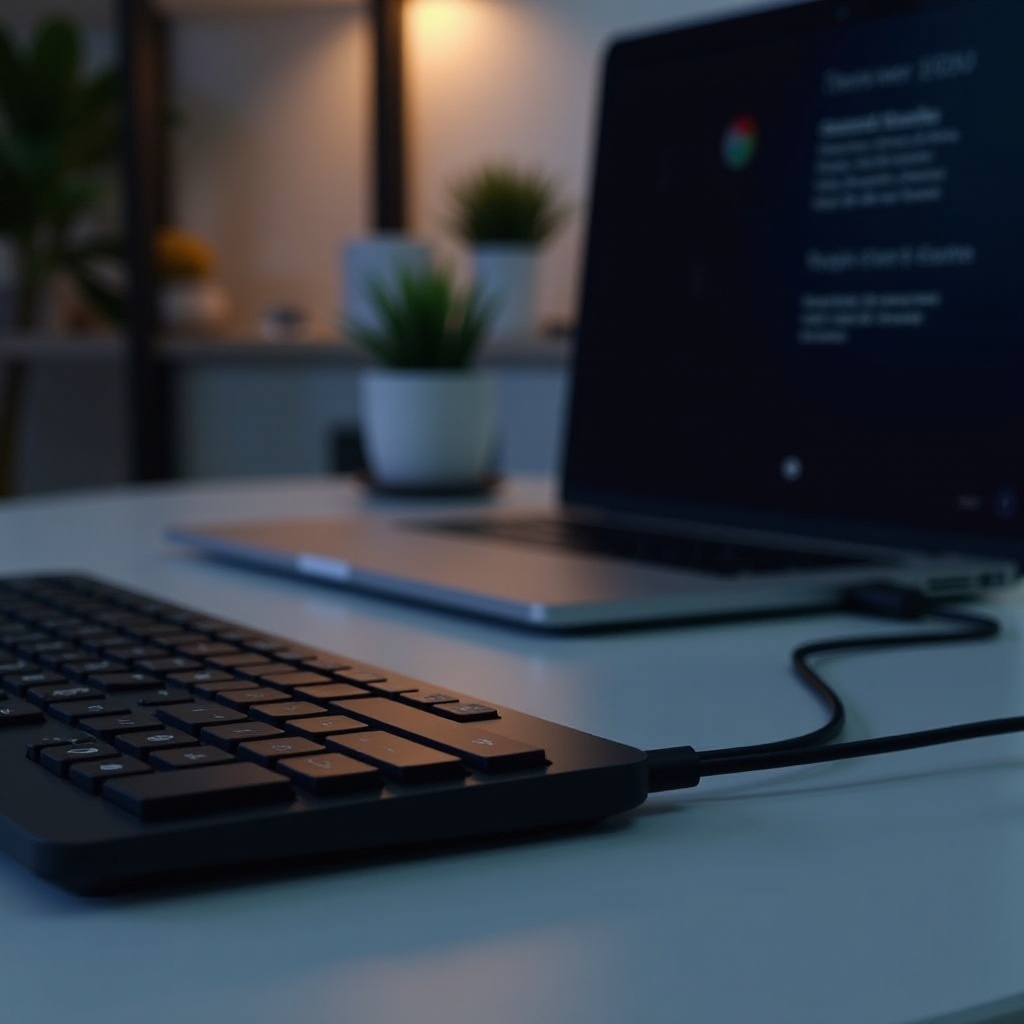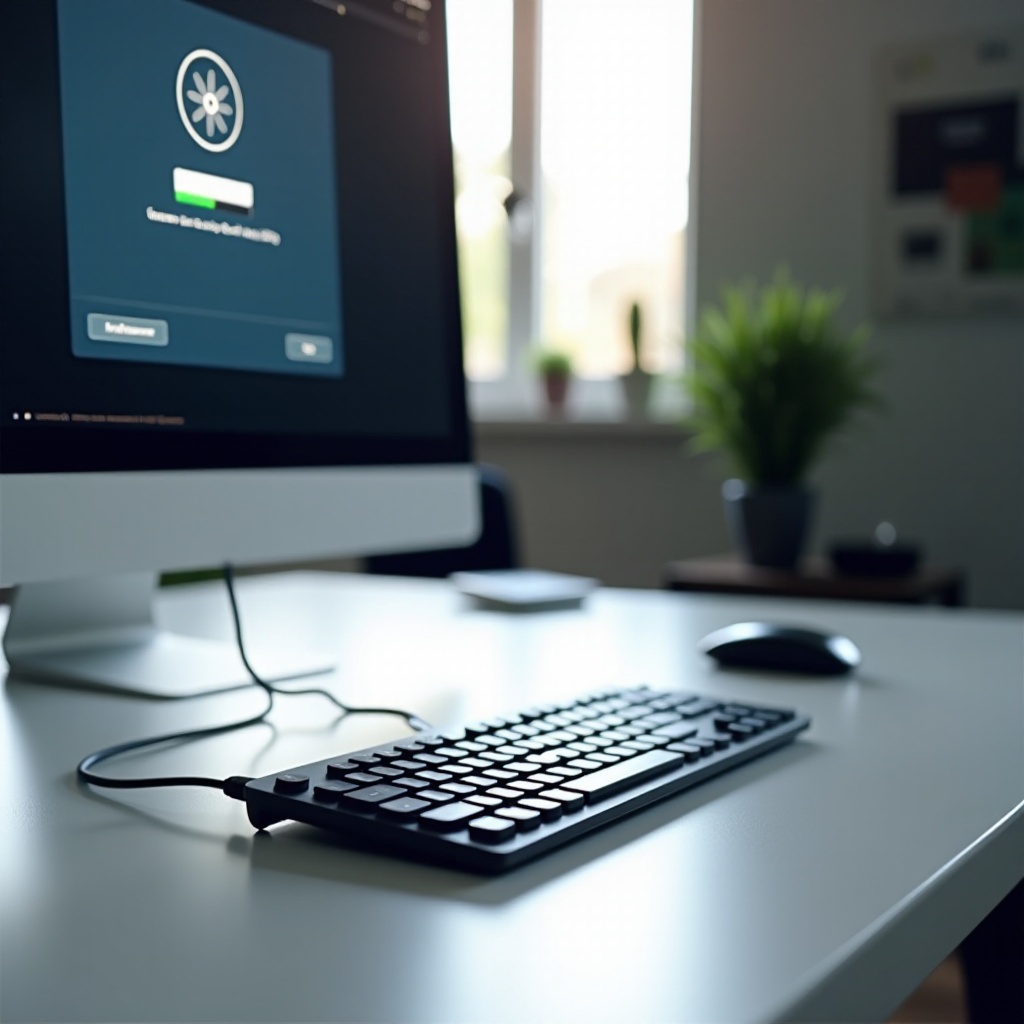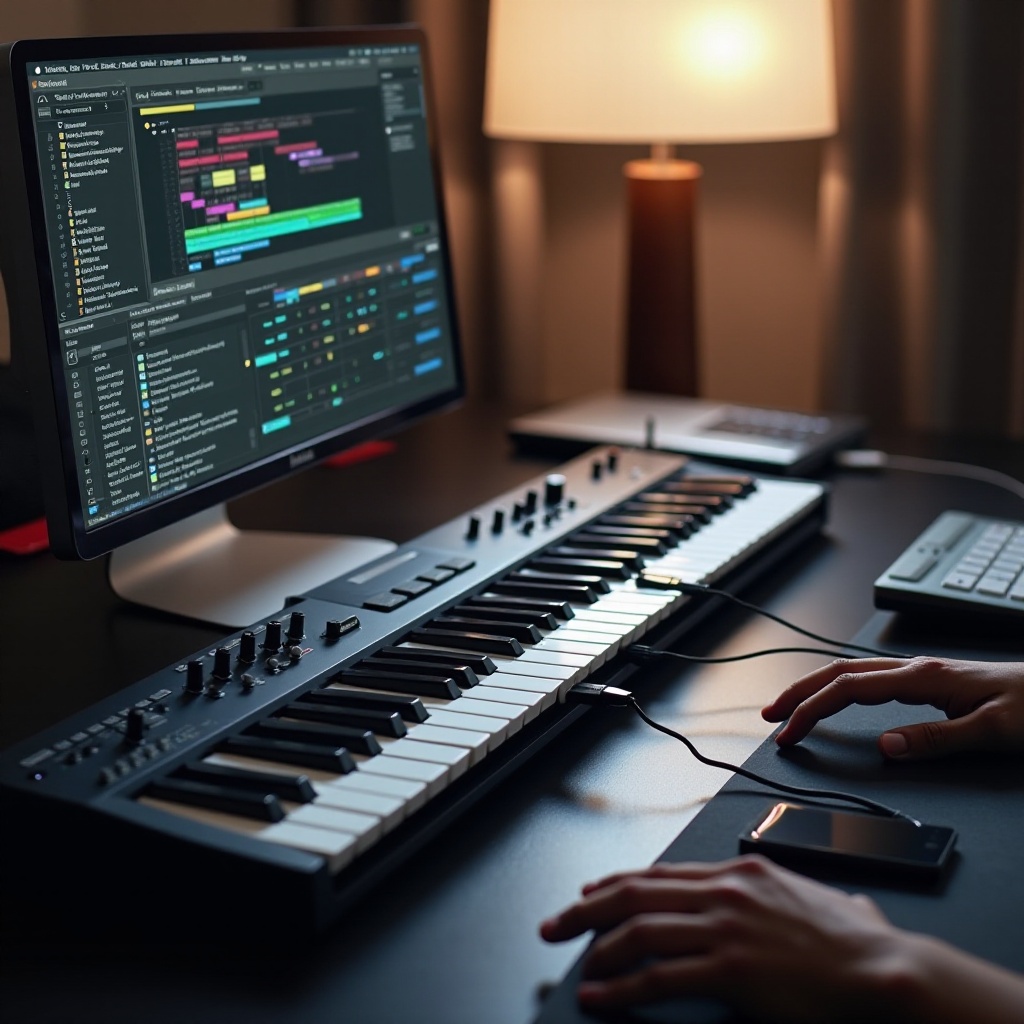Introduction
Connecting your electric keyboard to your computer opens up a world of musical possibilities. Whether you’re recording tracks, producing music, or simply learning, the connection transforms your setup into a powerful music studio. This guide covers the types of electric keyboards, various connection methods, necessary software, and the benefits of connecting your electric keyboard to your computer.

Types of Electric Keyboards
Before delving into connection methods, it’s essential to understand the different types of electric keyboards.
Digital Pianos: These keyboards focus on replicating the sound and feel of an acoustic piano. They are popular among classical musicians and those who desire an authentic piano experience without the bulk and maintenance of a traditional piano.
Synthesizers: Known for their versatility, synthesizers can generate a wide array of sounds, from imitating traditional instruments to creating entirely new ones. They’re a favorite among electronic music producers.
MIDI Controllers: These keyboards don’t generate their own sound but control other instruments or software through MIDI signals. They are perfect for those who want full control over their music production software.
Understanding the type of keyboard you own helps in choosing the best connection method for your needs.
Connection Methods
Connecting your electric keyboard to your computer can be as simple as plugging in a cable or as complex as setting up a wireless connection. Here are the primary methods:
USB
USB is the most straightforward and commonly used method. Most modern electric keyboards come with a USB port. Here’s how you can connect your keyboard via USB:
- Locate the USB port on your keyboard and your computer.
- Connect the USB cable from the keyboard to the computer.
- Install any necessary drivers if prompted.
- Open your Digital Audio Workstation (DAW) or other software to begin.
USB connections are reliable and easy to set up, making them ideal for beginners.
MIDI Interface
For a more professional setup, a MIDI interface provides greater control and flexibility. This method is especially useful for those using older keyboards without USB ports.
- Check if your keyboard has MIDI In/Out ports.
- Connect MIDI cables from your keyboard to the MIDI interface.
- Connect the MIDI interface to your computer via USB.
- Install any required drivers for the MIDI interface.
- Configure your DAW to recognize the MIDI input.
Bluetooth
Bluetooth connections offer wireless freedom, minimizing cable clutter. This method is gaining popularity with the advent of wireless technology in music equipment.
- Ensure your keyboard supports Bluetooth connectivity.
- Enable Bluetooth on both your keyboard and your computer.
- Pair the devices by following the device-specific instructions.
- Open your DAW and select the Bluetooth keyboard as your input device.
While convenient, Bluetooth connections may sometimes introduce latency, which can be a significant concern for live performances.
Necessary Software
To make the most out of your electric keyboard, you’ll need relevant software. Here’s what you should consider:
DAWs (Digital Audio Workstations)
A DAW is essential for recording, editing, and producing music. Some renowned DAWs include:
- Ableton Live: Ideal for electronic music producers and live performances.
- FL Studio: A user-friendly option that’s great for beginners and advanced users alike.
- Logic Pro X: Mac-exclusive, highly versatile, and professional-grade software.
- Pro Tools: Industry-standard for professional recording studios.
Drivers and Firmware
Your keyboard may require specific drivers and firmware to function correctly with your computer. Follow these steps:
- Visit the manufacturer’s website to download the latest drivers.
- Install the drivers according to the provided instructions.
- Check for firmware updates to ensure your keyboard has the latest features and improvements.
Ensuring that all software is up-to-date will help prevent connectivity issues and ensure the best performance.

Benefits of Connecting
Connecting your electric keyboard to your computer comes with various benefits that can enhance your musical journey.
Recording and Producing Music
A computer-connected keyboard enables you to record and produce high-quality music. You can lay down multiple tracks, edit them, and create professional-sounding recordings right from your home studio.
Software Integration and Virtual Instruments
Connecting your keyboard allows you to use virtual instruments and expansive sound libraries that are not available on the keyboard itself. This integration amplifies your creative capabilities, giving you access to thousands of sounds and effects.
Enhanced Learning Tools
Several software applications offer interactive lessons and feedback when connected to a keyboard. These tools are invaluable for beginners looking to improve their skills or seasoned musicians seeking new inspiration.

Common Issues and Troubleshooting
Despite the benefits, connecting your keyboard to your computer may present some issues. Here are some common problems and solutions:
Connection Failures
If your computer doesn’t recognize your keyboard:
- Check all physical connections.
- Try different USB ports or cables.
- Restart your computer and keyboard.
- Reinstall drivers if necessary.
Latency Problems
Latency can make playing feel sluggish. To reduce latency:
- Use a direct USB connection rather than Bluetooth.
- Close unnecessary applications on your computer.
- Adjust the buffer size within your DAW settings.
Driver Compatibility
Sometimes, the issue lies with driver compatibility:
- Ensure you have the latest drivers from the manufacturer’s website.
- Check your operating system’s compatibility with the drivers.
- Contact customer support for persistent issues.
Conclusion
Connecting your electric keyboard to your computer vastly expands what you can do with your musical creativity. From the method of connection to the required software and troubleshooting common issues, this guide covers all the essentials to help you make the most of your electric keyboard setup.
Frequently Asked Questions
What should I do if my keyboard is not recognized by the computer?
Ensure all cables are securely connected, try a different port or cable, restart both devices, and reinstall any necessary drivers.
How can I reduce latency when using my electric keyboard with a computer?
Opt for a direct USB connection, close background applications, and adjust buffer size settings in your DAW.
Are there any specific DAWs that work best with electric keyboards?
While most DAWs are versatile, Ableton Live, FL Studio, Logic Pro X, and Pro Tools are widely recommended for their features and compatibility with electric keyboards.